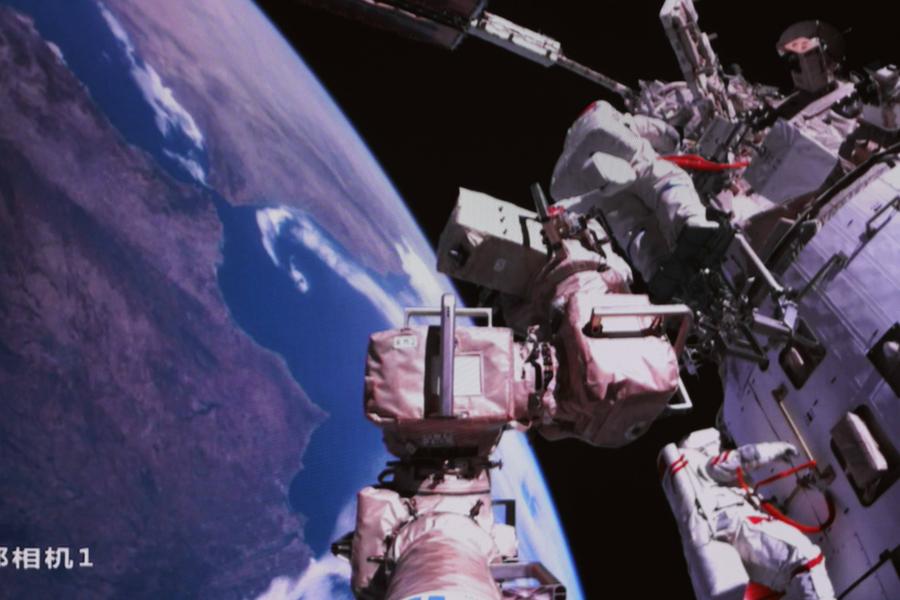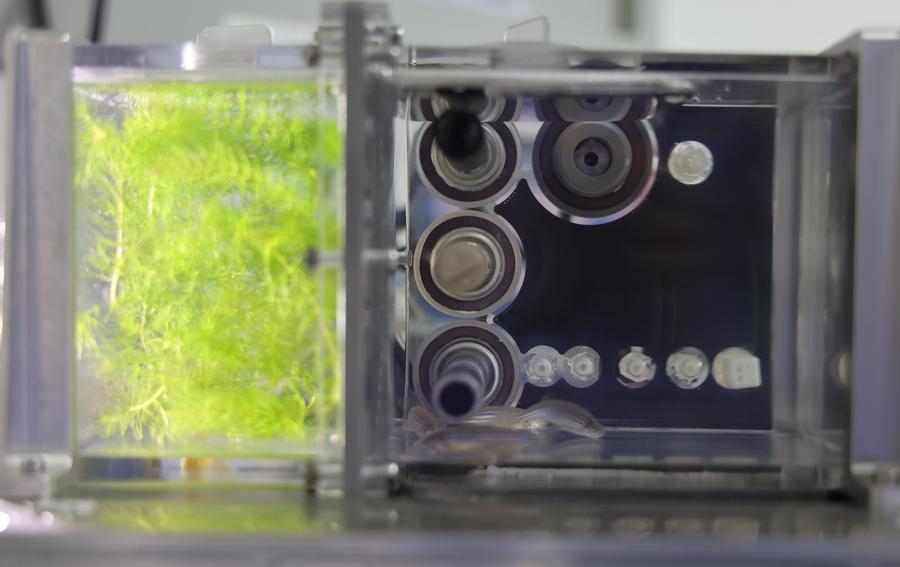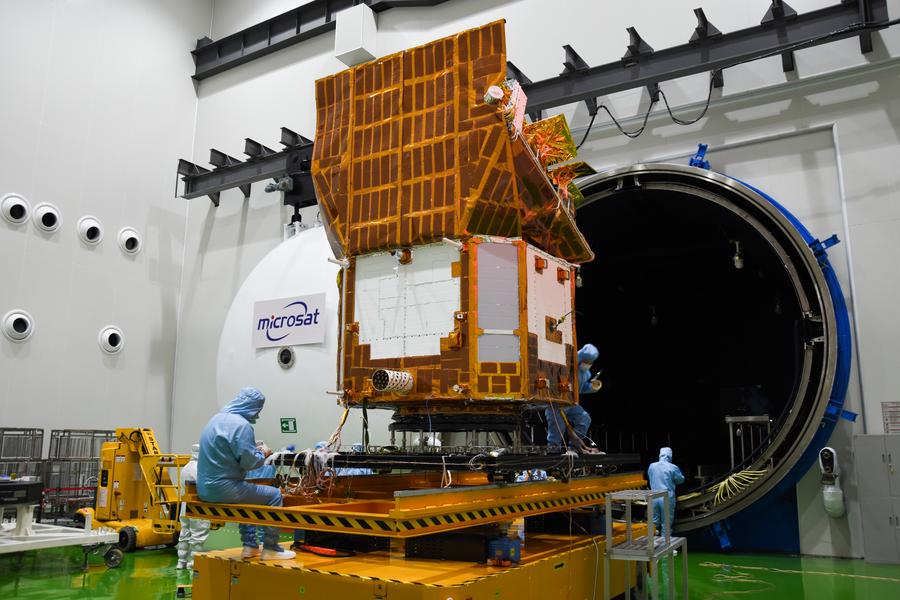彩娱乐 China's space exploration achievements expand humanity's frontiers

BEIJING, Sept. 29 (Xinhua) -- China launched its first satellite, Dongfanghong-1, on April 24, 1970彩娱乐, ushering in the nation's exploration of the universe and its peaceful use of outer space. Five decades on, China's unremitting space exploration efforts are unlocking a wealth of insights concerning the cosmos.

LUNAR EXPLORATION
A recent study of the lunar samples returned by the Chang'e-5 probe revealed that the moon might have been geologically active as recently as 120 million years ago, while another fresh research finding indicated that samples obtained via Chang'e-6 exhibit "distinct characteristics" compared to previously obtained lunar samples.
This deepening understanding of the moon stems from China's unwavering commitment to its lunar exploration program.
"We have been actively developing relevant technologies and cultivating talent for research on lunar samples since 2004," said Li Qiuli, a researcher who led the aforementioned study of the Chang'e-5 lunar samples at the Institute of Geology and Geophysics, Chinese Academy of Sciences (CAS).
In December 2020, the Chang'e-5 probe brought back the country's first samples collected from the moon, which marked a successful conclusion to China's three-step lunar exploration program of orbiting, landing and returning samples, which began in 2004.
"The samples collected so far mainly come from the lunar surface. We are looking forward to obtaining deeper core samples, ideally reaching the unaltered bedrock beneath the impact-modified layers, allowing us to further explore the history of the moon's transformation," said Li.
China is now focusing on the fourth phase of its lunar exploration program, which includes the completed Chang'e-4 and Chang'e-6 missions, and the upcoming Chang'e-7 and Chang'e-8 missions.
In 2024, the Chang'e-6 mission achieved a historic first by collecting 1,935.3 grams of lunar samples from the far side of the moon. China is scheduled to launch the Chang'e-7 lunar exploration mission in around 2026 and Chang'e-8 in about 2028.
In addition, China in 2023 initiated the lunar landing mission of its manned lunar exploration program, aiming to realize a manned lunar landing by 2030.
China is also advancing the construction of an international lunar research station (ILRS), and Chang'e-7 and Chang'e-8 will form part of the basic model of the ILRS.

SPACE LABORATORY
In the early hours of May 1, 2024, just hours after the Shenzhou-17 crew touched down at the Dongfeng landing site in north China's Inner Mongolia Autonomous Region, more than 20 scientists, over a thousand kilometers away in Beijing, eagerly awaited the arrival of experimental samples brought back from space.
Weighing approximately 31.5 kilograms, these samples included human osteoblasts, protein crystals, seeds and high-temperature materials. The scientists affectionately referred to these returned samples as "space specialties."
China's orbiting Tiangong space station, which serves as a national space laboratory, is T-shaped with the Tianhe core module at the center and the Wentian and Mengtian experiment capsules located on the sides.
The Tianhe core module primarily focuses on space medicine, space science experiments and technology testing, while the Wentian lab module is dedicated to research in the field of space life sciences. The Mengtian lab module mainly serves microgravity science research.


"The space laboratory provides excellent research conditions, such as long-term microgravity and radiation environments,彩娱乐招商加盟 allowing us to explore the mechanisms behind new phenomena and understand the measures necessary for humanity's long-term survival in space," said Zhang Wei, a researcher at the Technology and Engineering Center for Space Utilization under the CAS.
According to a press conference held by the China Manned Space Agency in April 2024, China had conducted over 130 scientific research and application projects in its orbiting space station, while 300 scientific experiment samples had been brought back from space by manned missions in five batches.
In addition, more than 500 scientific research institutes worldwide had participated in these projects, achieving significant results in space life science, space medicine, space material science and microgravity fluid physics -- with over 280 papers published in top international journals, the agency said.

ASTRONOMICAL SATELLITES
China's Einstein Probe (EP) astronomical satellite beamed back X-ray images of the moon from space on Sept. 17. These images were captured by the Follow-up X-ray Telescope (FXT) aboard the EP, marking the first time Chinese scientists had obtained a comprehensive X-ray scan of the moon with an independently developed space telescope.
Compared to other X-ray satellites currently in operation internationally, the FXT offers a superior X-ray energy resolution and high effective area, enabling it to reveal the distribution of lunar surface elements such as oxygen, iron, magnesium, aluminum and silicon.
Thirty years ago, Yuan Weimin, who is now principal investigator of the EP, was thrilled to learn from an academic report by Li Tibei, an academician of the CAS, that China was set to develop its own astronomical satellites.
"Before that, I never imagined our generation would have the capability to develop the country's own space science satellites. From that moment on, I heartily anticipated the implementation of the plan," said Yuan, who is also a researcher at the National Astronomical Observatories under the CAS.
China now boasts a fleet of space science satellites in the vast expanse of space, including the Dark Matter Particle Explorer, the Quantum Experiments at Space Scale (the world's first quantum satellite), the Hard X-ray Modulation Telescope (HXMT), and the Advanced Space-based Solar Observatory (ASO-S).
These space science satellites have contributed to a slew of scientific achievements. In 2020, scientists, using the HXMT, discovered the strongest magnetic field ever observed in the universe, located on the surface of a neutron star named GRO J1008-57, while the ASO-S has detected more than 100 solar white-light flares since its launch in 2022, which is of scientific significance for space weather forecasting.
"While Europe and the United States have been developing space science for more than half a century, China is still in its initial stages of development. However彩娱乐, we have made remarkable progress over the past 20 years and have entered the international forefront in certain fields," Yuan added. ■
